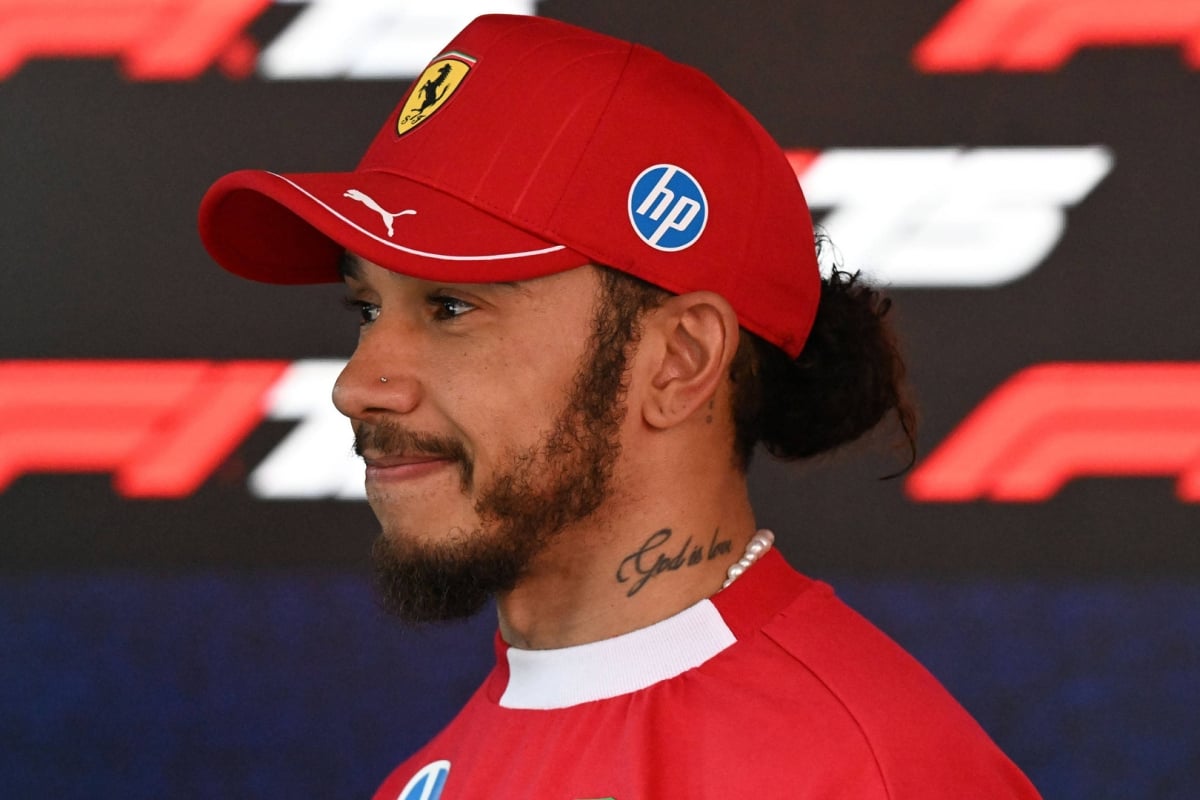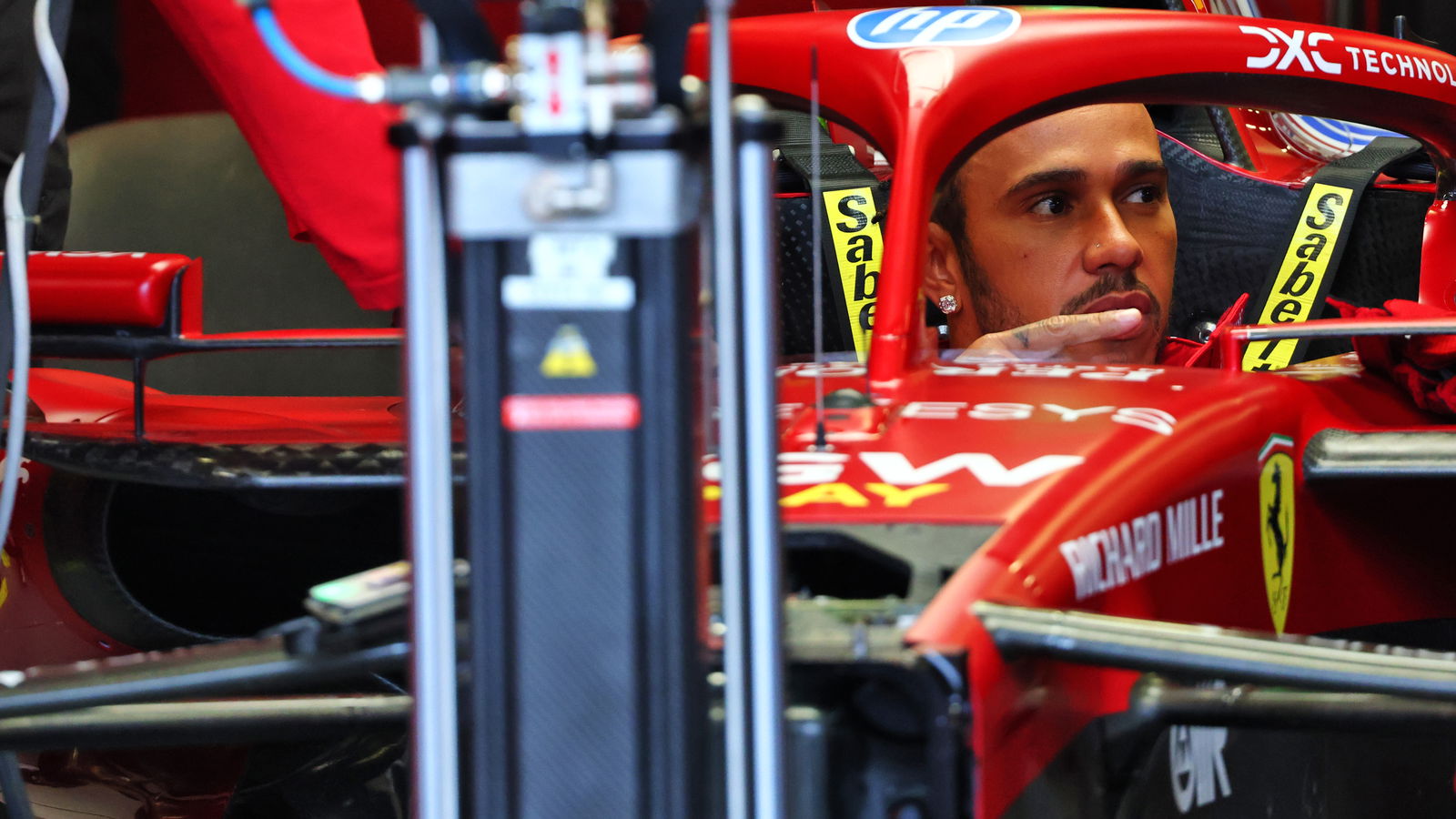In the high-altitude, high-stakes cauldron of the Mexican Grand Prix, it wasn’t just the engines that were screaming. A rare and explosive radio message from Lewis Hamilton ripped through the airwaves, laying bare a deep-seated frustration that threatens to overshadow the sport itself. “These guys are unbelievable,” the seven-time world champion fumed, his voice tight with a palpable sense of injustice. The target of his ire? The FIA race stewards and a 10-second penalty that he felt was not just wrong, but “unacceptable.”
It was a decision that didn’t just cost him a hard-fought podium; it ignited a firestorm of debate about consistency, fairness, and the very rules of engagement in Formula 1. For Hamilton, this was more than a bad call. It was a symptom of a recurring problem, and this time, it happened while his chief rival, Max Verstappen, seemed to play by a different set of rules entirely—and walk away unscathed.
The flashpoint occurred on lap six, in a thrilling, knife-edge battle that had fans on their feet. Hamilton and Verstappen, whose 2021 rivalry remains one of the most intense in F1 history, were at it again. Verstappen, known for his aggressive, uncompromising style, made a bold move at turn one, forcing Hamilton wide and off the track. The fight continued, wheel-to-wheel, through the following corners. Then, at turn four, the situation boiled over.

As Hamilton attempted to go around the outside of Verstappen, his brakes locked up. He skated off the circuit, rejoining the track ahead of the Red Bull driver. To the stewards watching from the control tower, this was a clear violation. On lap 18, the message came down, relayed to Hamilton by his race engineer: a 10-second time penalty for “leaving the track and gaining an advantage.”
Hamilton’s response was immediate and incandescent. The penalty was a gut punch. He had started in third, was running in third, and saw a podium finish dissolving before his very eyes. By the time the race concluded, the 10-second penalty had relegated him to a distant eighth place.
But Hamilton’s fury wasn’t just about his own punishment. It was about the lack of punishment for the driver he felt had instigated the entire sequence.
The stewards, in a move that baffled Hamilton and many onlookers, had also investigated Verstappen’s actions during the intense battle. They looked at his aggressive move at turn one and another incident at turn three where Verstappen himself had gone off-track. Their conclusion? “No further action.”
This is the very heart of the controversy. From Hamilton’s cockpit, the maths didn’t add up. Two drivers had gone off the track during a single, frantic battle. One, who felt he was the victim of an aggressive push, received a race-altering penalty. The other, the aggressor in Hamilton’s view, received nothing. To make matters sting even more, Verstappen would go on to finish the race on the podium in third place—the very position Hamilton was fighting for.
The perceived double standard was staggering. It created a narrative where the driver who initiated the aggressive contact seemingly benefited, while the driver who tried to react was penalized.

Hamilton later explained his side of the turn four incident, painting a picture not of a driver trying to cheat, but of one left with no options. He pointed to the notoriously low grip levels of the high-altitude Mexican circuit, especially in that tricky corner. He argued that Verstappen’s initial move had put him in a compromised position, and when he went for the outside line, the lock-up was unavoidable. Once his brakes were locked, he was a passenger, and going off-track was his only choice to avoid a more significant collision.
This wasn’t a case of “gaining an advantage,” in his mind; it was a case of “surviving an incident.” The stewards, however, disagreed. They felt he should have given the position back or taken the designated escape road, a split-second decision to make while wrestling a billion-dollar machine at over 100 mph.
The frustration wasn’t confined to the Mercedes garage. Hamilton’s former teammate, George Russell, now driving for a different team, had been complaining about Verstappen from the very first lap. “The guy can just cut the grass and keep position,” Russell’s radio message crackled, referencing an opening lap incident where Verstappen ran wide at turn one and cut the corner. “No penalty, no nothing.”
Russell’s comments were crucial. They showed that this wasn’t just a case of sour grapes from Hamilton. Other drivers were seeing the same incidents, the same driver, and asking the same question: Why are the rules being applied differently? It painted a picture of a broader frustration among the grid, a feeling that the line for what is permissible is blurry and, perhaps, moves depending on who is driving.
This incident is a microcosm of Formula 1’s biggest ongoing challenge: consistent stewarding. Fans want to see hard, aggressive, wheel-to-wheel racing. It’s the lifeblood of the sport. But that racing must be governed by rules that are clear, understandable, and, above all, applied fairly to every single driver, every single time.

When one driver can go off-track multiple times, as Verstappen appeared to do, without consequence, while another gets a 10-second penalty for a single, arguably forced, excursion, it erodes trust. It leaves drivers confused about where the line is. How hard can they race? How much can they push? The answer, frustratingly, seems to be “it depends.”
The stewards have an incredibly difficult job. They must make high-pressure judgments in seconds, often with limited data, balancing the spirit of racing with the letter of the law. But the Mexico Grand Prix has become a major talking point for all the wrong reasons. The focus shifted from the skill of the drivers to the decisions of the officials.
As the season heads into its final stretch, the FIA is once again under intense pressure to address these concerns. The sport thrives on its rivalries, like the one between Hamilton and Verstappen. But those rivalries become toxic when the playing field doesn’t feel level.
Lewis Hamilton’s outburst was more than just the heat of the moment. It was a cry for fairness, a demand for consistency from a champion who felt he had been wronged by the very system designed to protect the sport’s integrity. The question that now hangs heavy in the paddock is a simple one, but its answer is anything but: What is the FIA going to do about it?